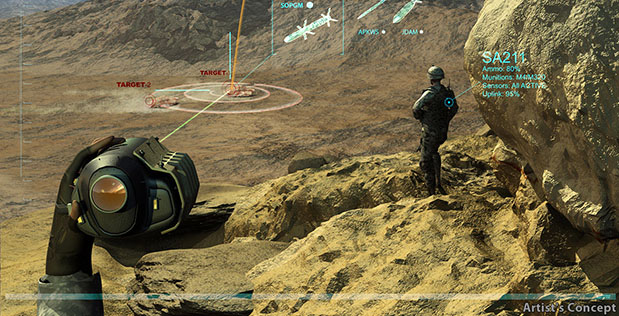Raytheon has successfully completed the flight test phase of the Defense Advanced Research Projects Agency (DARPA)’s Persistent Close Air Support (PCAS) programme.
“The PCAS programme was able to reduce close air support response times from nearly one hour to less than six minutes,” Tom Bussing, Raytheon vice president of Advanced Missile Systems, said. “By speeding critical information to decision makers, PCAS could save lives in the battlespace.”
During the US Marine Corps’ TALON Reach V exercise in March, the programme demonstrated end-to-end, fully digital weapons release of a GRIFFIN missile from a modified MV-22 OSPREY tiltrotor aircraft. In May, an A-10C THUNDERBOLT II attack aircraft and a joint terminal attack controller (JTAC) on the ground, both using PCAS’ real-time digital communications and situational awareness capabilities, successfully employed 10 GPS- and laser-guided weapons in a second series of flight tests.
The PCAS system is designed to be platform-, digital radio-, sensor-, and weapons-class agnostic, and to be portable from platform to platform. The two main parts of the system are PCAS-Air, which consists of smart launcher electronics and a pilot tablet, and PCAS-Ground, which comprises the equipment used by the JTAC.
Raytheon is the systems integrator for PCAS. The company leads an industry team comprised of Rockwell Collins, General Electric, BAE Systems, Northrop Grumman,and 5-D Systems. Raytheon brings its expertise in overall systems integration, weapons, aircraft integration and unmanned aircraft system ground control stations to PCAS. As part of its conclusion of the programme, DARPA is now focusing on transitioning PCAS technology demonstrated on both the A-10C and the MV-22 to different military platforms. DARPA is also working with the Army on other PCAS transition activity relevant to ground forces and manned and unmanned aircraft.
“The PCAS programme was able to reduce close air support response times from nearly one hour to less than six minutes,” Tom Bussing, Raytheon vice president of Advanced Missile Systems, said. “By speeding critical information to decision makers, PCAS could save lives in the battlespace.”
During the US Marine Corps’ TALON Reach V exercise in March, the programme demonstrated end-to-end, fully digital weapons release of a GRIFFIN missile from a modified MV-22 OSPREY tiltrotor aircraft. In May, an A-10C THUNDERBOLT II attack aircraft and a joint terminal attack controller (JTAC) on the ground, both using PCAS’ real-time digital communications and situational awareness capabilities, successfully employed 10 GPS- and laser-guided weapons in a second series of flight tests.
The PCAS system is designed to be platform-, digital radio-, sensor-, and weapons-class agnostic, and to be portable from platform to platform. The two main parts of the system are PCAS-Air, which consists of smart launcher electronics and a pilot tablet, and PCAS-Ground, which comprises the equipment used by the JTAC.
Raytheon is the systems integrator for PCAS. The company leads an industry team comprised of Rockwell Collins, General Electric, BAE Systems, Northrop Grumman,and 5-D Systems. Raytheon brings its expertise in overall systems integration, weapons, aircraft integration and unmanned aircraft system ground control stations to PCAS. As part of its conclusion of the programme, DARPA is now focusing on transitioning PCAS technology demonstrated on both the A-10C and the MV-22 to different military platforms. DARPA is also working with the Army on other PCAS transition activity relevant to ground forces and manned and unmanned aircraft.


No comments:
Post a Comment